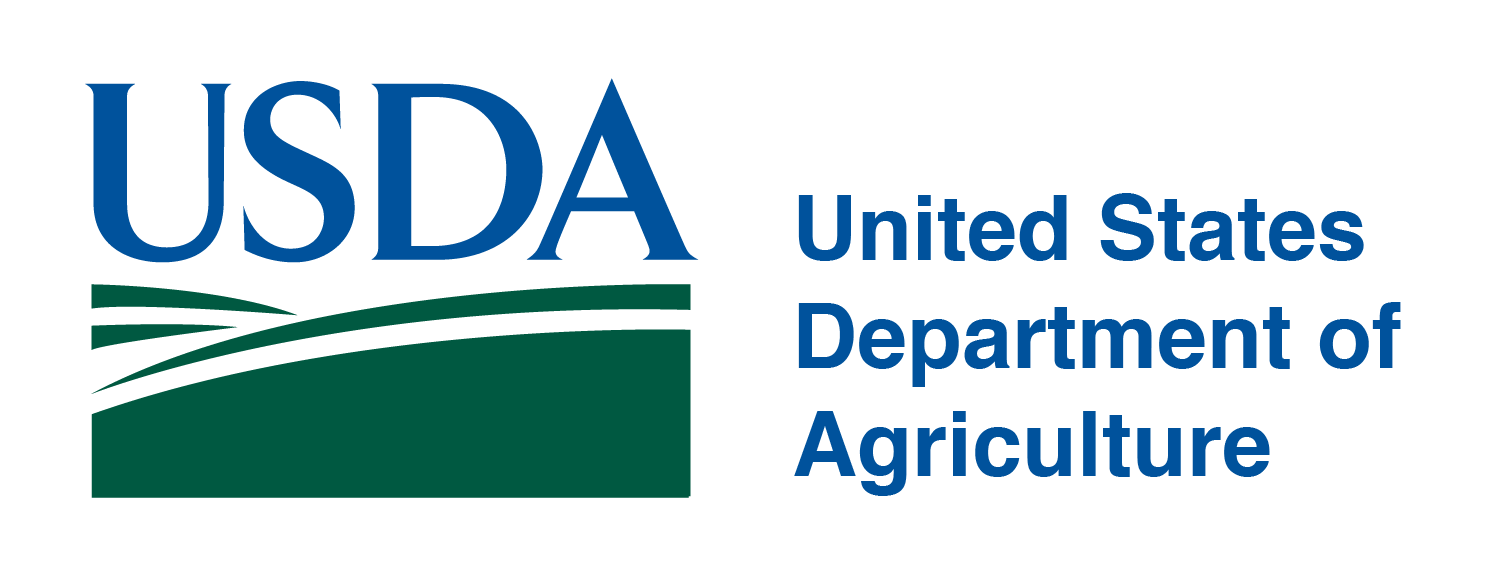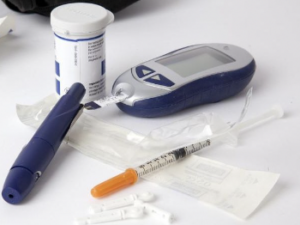- Request for Information (RFI): Evolving the Network of the National Library of Medicine
- Dental Therapists, Who Can Fill Cavities and Check Teeth, Get the OK in More States
- Colorectal Cancer Is Rising among Younger Adults. Some States Want to Boost Awareness.
- Rural Hospitals Built During Baby Boom Now Face Baby Bust
- Food Stamps Go Further in Rural Areas — Until You Add Transportation Costs
- CMS Announces Resources and Flexibilities to Assist with the Public Health Emergency in the State of Texas
- CMS Proposes New Payments for Digital Health Under CY2025 PFS Draft Rule
- Improving Public Health by Strengthening Community Infrastructure
- Biden Harris Administration Proposes Policies to Reduce Maternal Mortality, Advance Health Equity, and Support Underserved Communities
- Nearly Half of U.S. Counties Don't Have a Single Cardiologist
- Randolph County, Ill. Turns Unused Part of Nursing Home Into State-Of-The-Art Behavioral Health Center
- Safe and Stable Housing Is a Foundation of Successful Recovery
- Rural RPM Program Is a Lifeline for Pregnant Women
- Expert: Rural Hospitals Are Particularly Vulnerable to Increasing Cyberattacks Targeting Healthcare Facilities
- Biden-Harris Administration Invests Over $200 Million to Help Primary Care Doctors, Nurses, and Other Health Care Providers Improve Care for Older Adults
USDA Releases Rural America At A Glance Report

The U.S. Department of Agriculture (USDA) released the Rural America at a Glance report. The report notes a change in the composition of the rural labor force over the past decade due to an overall decline in population growth, aging of the population, and changing industry structure. Rural America has become more economically diverse over time, with increasing employment in health care, hospitality, and other service industries. There is also evidence that the rural workforce is changing in terms of diversity. The report is helpful when considering new ways to strengthen the rural health pipeline.
Improving the Oral Health of Rural Veterans
 According to a new report from the American Institute of Dental Public Health (AIDPH) and CareQuest Institute, veterans in rural areas are struggling to receive oral care. Only about 15% of veterans are eligible for dental care through the Veterans Health Administration (VHA), with the percentage being even lower for rural veterans.
According to a new report from the American Institute of Dental Public Health (AIDPH) and CareQuest Institute, veterans in rural areas are struggling to receive oral care. Only about 15% of veterans are eligible for dental care through the Veterans Health Administration (VHA), with the percentage being even lower for rural veterans.
Learn more in the full report.
Rural America is Getting Older: A Fifth of the Population Now Over Age of 65
Rural America is continuing to get older, and a new report shows the extent has hit a new high.
The U.S. Department of Agriculture’s annual Rural America at a Glance report shows more than 20% of rural residents are over age 65 compared to 16% in urban areas.
“The aging of the baby-boom generation will continue to contribute to the loss of working-age adults through the end of this decade,” the report from the USDA’s Economic Research Service stated.
The report also said there is a corresponding decrease in the working-age population, with those 18 to 64 making up 58% of non-metro residents, compared with 61% of metro residents.
Fixing the problem will take a lot of work from a lot of different areas, said Mary Hendrickson, a professor of rural sociology at the University of Missouri.
“There’s federal issues, there are state issues, there are community issues, there are regional issues. Can we start thinking about regional networks? There really is not just one thing,” she said.
Hendrickson said rural areas need to make things better for families, and that can include such improvements as better broadband access and reliable day care and preschool options, which are not only lacking but often nonexistent in rural areas.
“If we’re going to talk about wanting to be family friendly, then we’re going to need to have some policies that are helpful,” Hendrickson said.
Some rural communities have tried creative ways to attract younger people to make their home away from urban areas, including offering grants to new homeowners and establishing recruiting committees to entice former residents to move back.
“Those kinds of programs are essential,” Henrickson said. “Folks who live in these rural areas sometimes look around and think more of the challenges rather than thinking about what are the opportunities for helping and making their place attractive for a younger generation.”
Other rural advocates caution those kinds of projects won’t be enough and argue for more systemic change at the federal level.
“We learned during COVID that many people can work from anywhere, and that gave a lot of hope to rural communities looking to increase their population,” said Chris Merritt, executive director of the Illinois Institute of Rural Affairs at Western Illinois University.
“But state and federal governments need to get more involved to make sure these communities have health care, schools, transportation and grocery stores. Those things can’t happen at just the community level.”
While rural communities look to increase their younger population, they will also have to deal with new challenges of having more older residents.
“Declines in the working-age population may make it harder to meet labor demands in some rural industries and local labor markets. At the same time, many rural areas lack sufficient health care capacity, broadband service, community centers and other services to address the challenges associated with an aging population,” the USDA report said.
This story was produced in partnership with Harvest Public Media, a collaboration of public media newsrooms in the Midwest. It reports on food systems, agriculture and rural issues. Follow Harvest on Twitter: @HarvestPM.
Pennsylvania Releases Broadband Plan
The Pennsylvania Broadband Development Authority released its plan which outlines the goals and strategies to expand broadband access across the Commonwealth.
The Authority, created by the legislature in December 2021, has been charged with leveraging the state’s approximate $100 million of federal funding over five years to ensure that more Pennsylvanians have access to high-speed internet. According to the Authority’s plan, the Commonwealth has roughly 640,000 to 800,000 Pennsylvanians that meet the FCC’s definition of being “unserved” and lack access to high-speed broadband.
Pennsylvania Broadband Development Authority Executive Director Brandon Carson stated, “Broadband access affects every area of our lives – from work, to education, to health, and safety. Closing the digital divide helps enhance our communities and fosters economic growth and innovation for all Pennsylvanians.”
To read the Authority’s plan click here.
Food Insecurity Declines for Children in 2021.
 About 10 percent of U.S. households were food insecure in 2021, meaning they had difficulty providing enough food for all their members at times because of a lack of resources. Though this number was relatively unchanged from the previous year, food insecurity for households with children declined to 12.5 percent from 14.8 in 2020. Households with no children accounted for two-thirds of food-insecure households, with single adults at the greatest risk. For rural areas, the prevalence is slightly lower than in urban areas, 10.8 percent versus 12.2 percent. The data is provided every year by the Economic Research Service at the U.S. Department of Agriculture.
About 10 percent of U.S. households were food insecure in 2021, meaning they had difficulty providing enough food for all their members at times because of a lack of resources. Though this number was relatively unchanged from the previous year, food insecurity for households with children declined to 12.5 percent from 14.8 in 2020. Households with no children accounted for two-thirds of food-insecure households, with single adults at the greatest risk. For rural areas, the prevalence is slightly lower than in urban areas, 10.8 percent versus 12.2 percent. The data is provided every year by the Economic Research Service at the U.S. Department of Agriculture.
Read About Recent Health Advisories by Pennsylvania Department of Health
The Centers for Disease Control and Prevention (CDC) recently issued a CDC Health Advisory about early, elevated respiratory disease incidence caused by multiple viruses and occurring especially among children. This early increase in disease incidence highlights the importance of optimizing respiratory virus prevention and treatment measures. The full advisory is available here. Additionally, on November 3, 2022, Gov. Tom Wolf signed into law Senate Bill 317 known as the Expedited Partner Therapy Act (EPT) (Act 147 of 2022). The EPT Act takes effect on February 3, 2023. EPT is a therapeutic option that research studies have shown to be effective in reducing chlamydia and gonorrhea reinfection rates. To read the full advisory including prescribing instructions and liability issues, click here. Lastly, per- and polyfluoroalkyl substances (PFAS) are a class of thousands of widely used, man-made chemicals that bioaccumulate in humans and animals, are persistent in the environment, and can influence health outcomes. People can be exposed to PFAS via products such as nonstick cookware, processed food packaging, certain cosmetics, and soaps, and via contaminated drinking water when chemicals migrate into the water supply (public or well water). To read the full update, click here.
Diabetes in Special & Vulnerable Populations: National Learning Series
All 14 National Training and Technical Assistance Partners (NTTAPs) will collaborate for a four-part national learning series to engage health centers, Primary Care Associations, and Health Center Controlled Networks to increase foundational knowledge of effective strategies to prevent, treat, and manage diabetes among special and medically underserved populations. Participants will explore diabetes management in relation to the following topics: social determinants of health (SDOH) and structural barriers, intersectional identities of the health center workforce and patients, emergency preparedness, and environmental impacts on access to care. Visit the series information page for more information and registration links.
Final RecommendationHave Been Released: Screening for Sleep Apnea in Adults
The U.S. Preventive Services Task Force released a final recommendation statement on screening for obstructive sleep apnea in adults. The Task Force concluded that more research is needed to recommend for or against screening adults without recognized symptoms. The final recommendation statement provides the evidence on which it is based and a summary for clinicians.
Burnout Plagues Younger Primary Care Physicians
Half of U.S. primary care physicians under the age of 55 say they’re burned out and some anticipate leaving the profession in the next three years, per a new survey from the Commonwealth Fund. It’s the latest evidence of doctor shortages that could hamper efforts to reduce health disparities and fill gaps in care as the nation emerges from the pandemic.
Amazon Intends to Deliver Health Care to Your Door
Amazon continues to explore ways to become a presence in healthcare delivery. The latest venture is Amazon Clinic, a virtual service that will operate in 32 states and provide virtual care for more than 20 common health conditions, such as allergies, acne, and hair loss. And then there is Amazon Pharmacy, “where customers can get their medication delivered to their door conveniently—in just two days for Prime Members.” Amazon has also entered into an agreement to acquire One Medical, a human-centered and technology-powered provider of primary care.
